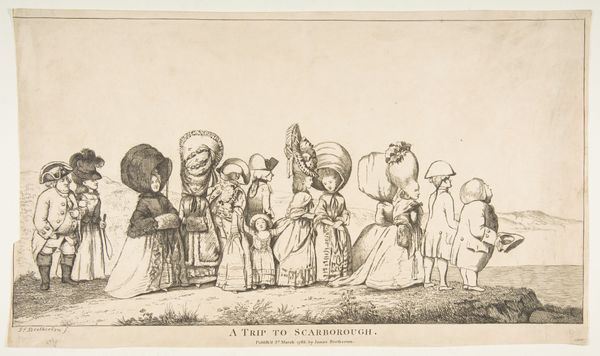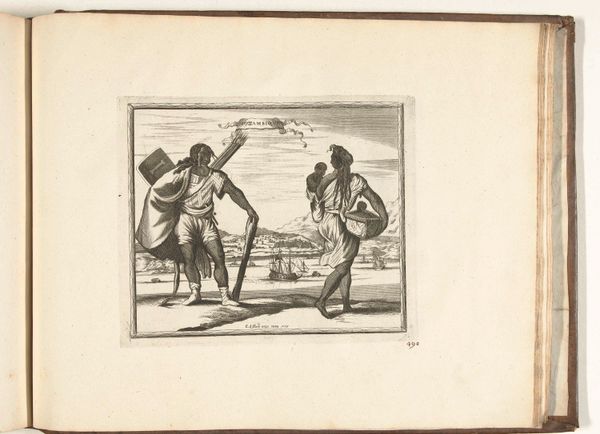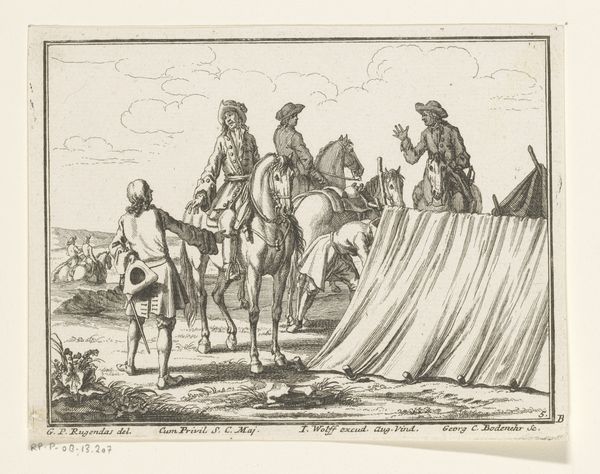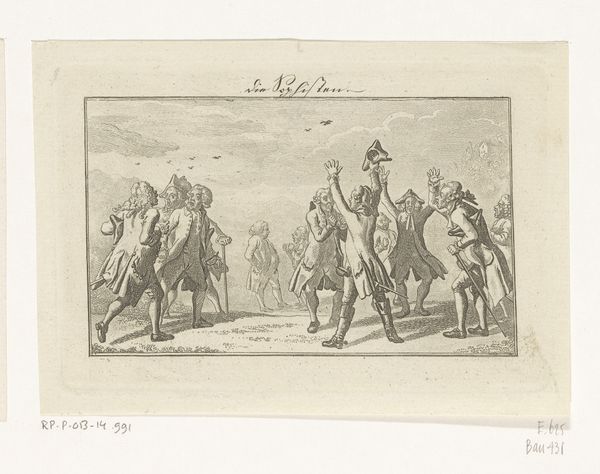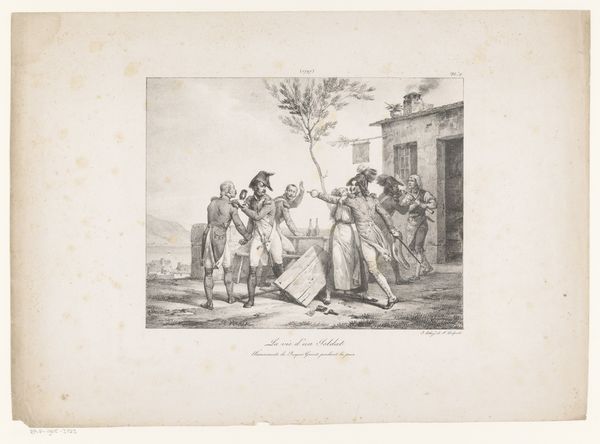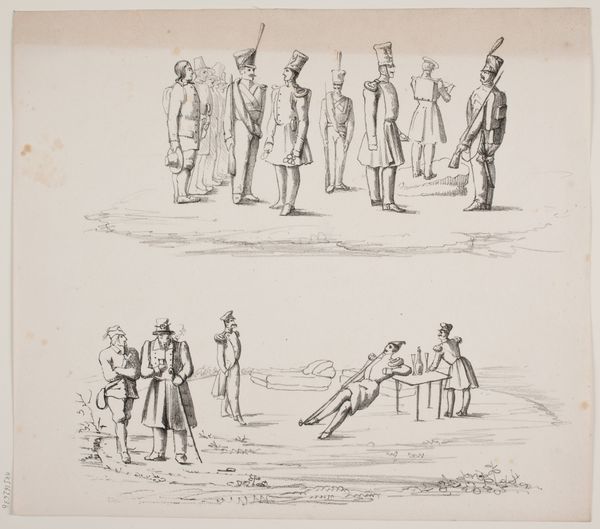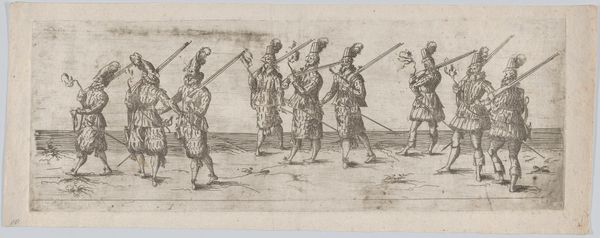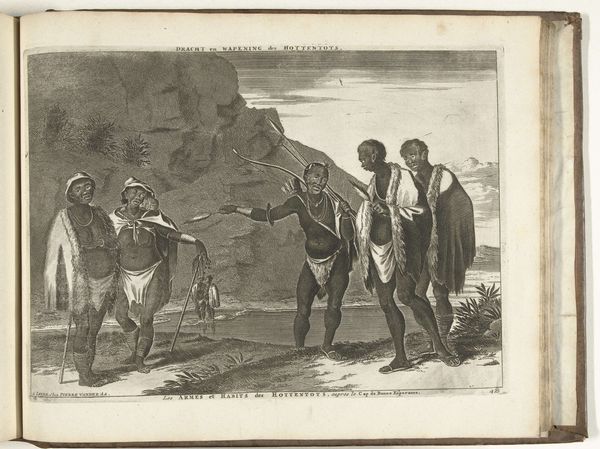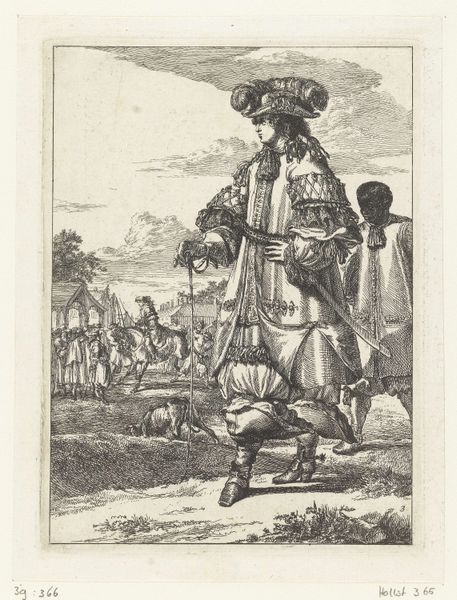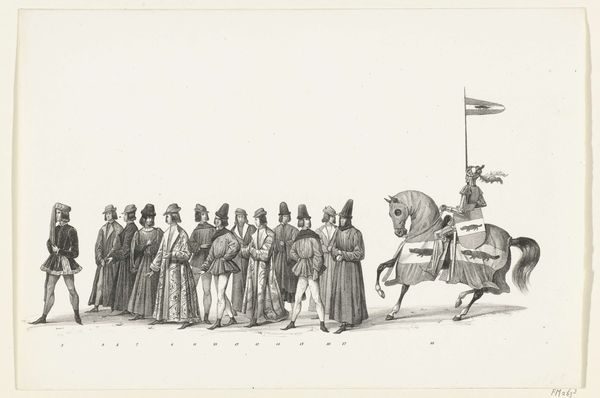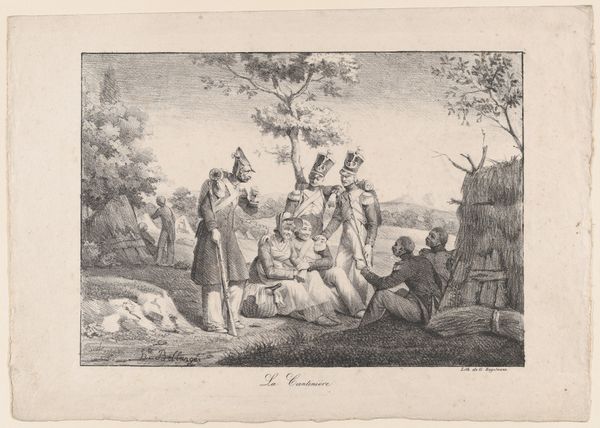
print, engraving
#
portrait
# print
#
old engraving style
#
figuration
#
genre-painting
#
history-painting
#
academic-art
#
engraving
Dimensions: height 144 mm, width 226 mm
Copyright: Rijks Museum: Open Domain
Editor: This is an intriguing 19th-century print called "Soldaten uit de Kaukasus," or "Soldiers from the Caucasus," created by an anonymous artist. I’m immediately struck by the level of detail achieved through the engraving process. How do you read this piece, focusing perhaps on the materials used and its social implications? Curator: I see this engraving primarily as a product of its time, reflective of the 19th-century fascination with documenting and classifying cultures. The print, made using readily available materials and reproducible techniques, allowed for wide distribution of this visual information. The question is, what social function did it serve? Was it ethnographic documentation or romanticized exotification for consumption? Editor: That’s a really good point. It feels like a very deliberate construction. Are the soldiers represented accurately, or are they stylized to fit European expectations? Curator: Consider the material conditions in which this engraving was produced. It's part of a larger industry of printmaking and distribution, fueling a demand for visual representations of the “other.” These images helped shape perceptions and perhaps solidify notions of Western dominance by representing different cultures as ‘primitive’ or exotic. The paper itself, the ink, and the printing press all speak to specific social and economic structures. What does the standardization allowed by printing mean for craft here? Editor: So you’re saying that it is part of a system that, through its very means of production, carries a message of power and perhaps even colonialism? Curator: Precisely! The choice of portraying soldiers is also not neutral. It's related to geopolitical interests and military narratives. I would ask: Who was commissioning these works? How were they disseminated, and to whom? How did this mode of representing faraway populations play a part in broader political and cultural projects of that era? Editor: That really shifts my understanding of the image. It's not just a portrait; it’s a commodity embedded within a complex power dynamic. Thanks for pointing out these material and contextual nuances. Curator: Exactly, it encourages one to delve deeper, understanding that art’s significance extends beyond surface-level aesthetics and gets truly exposed with insights to process and reception.
Comments
No comments
Be the first to comment and join the conversation on the ultimate creative platform.
